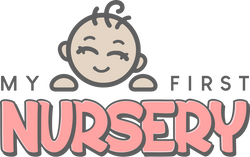
How to Sterilise Baby Bottles
How to Sterilise Baby Bottles
Welcoming a new baby into your home is a thrilling and sometimes overwhelming experience. As first-time parents, there's so much to learn, especially when it comes to keeping your baby safe and healthy. One crucial aspect of infant care is ensuring that all feeding equipment, particularly baby bottles, is properly sterilised. In this post, we'll explore why sterilising baby bottles is so important, how long you should continue sterilising, and the different methods available to help you keep your baby’s feeding gear spotless.
Shop All Baby Safety Products >
Why Is Sterilising Baby Bottles Important?
Your baby’s immune system is still developing, making them more vulnerable to infections that can cause serious illnesses like diarrhoea and vomiting. Even though modern cleaning techniques can do a good job of removing visible dirt and residue, they aren't always enough to eliminate harmful bacteria completely. This is why sterilisation is so essential—it provides an extra layer of protection by killing any lingering germs that could potentially harm your baby.
Sterilising isn’t just about cleanliness; it’s about safeguarding your baby's health during their most vulnerable months. Ensuring that bottles, teats, and other feeding equipment are sterile helps to protect your little one from infections that their bodies are not yet equipped to fight off.

How Long Should You Sterilise Baby Bottles?
It’s generally recommended to sterilise all feeding equipment until your baby is at least 12 months old. This includes bottles, teats, and any other items used for feeding, whether you’re using formula milk or expressed breast milk. After the first year, your baby's immune system will be stronger and more capable of handling minor bacterial exposure, so sterilising becomes less critical.
However, until that time, it's best to be diligent about sterilising everything your baby uses for feeding to minimize their risk of illness.
Different Methods for Sterilising Baby Bottles
There are several effective methods for sterilising baby bottles and feeding equipment. Depending on your lifestyle and preferences, you can choose the method that works best for you.
1. Cold Water Sterilising Solution
This method is simple and effective. Here’s how to do it:
• Instructions: Follow the manufacturer’s instructions for the correct dilution of the sterilising solution.
• Time: Submerge the feeding equipment in the solution for at least 30 minutes.
• Maintenance: Change the solution every 24 hours to maintain its effectiveness.
• Tips: Ensure there are no air bubbles trapped in the bottles or teats, as these can prevent the solution from reaching all surfaces. Most sterilisers have a floating cover or plunger to keep everything submerged.
Cold water sterilising is great for those who need a portable solution or don’t have access to electricity.
2. Steam Sterilising (Electric or Microwave)
Steam sterilising is a popular choice due to its speed and efficiency.
• Electric Steriliser: These devices use steam to kill bacteria and are very easy to use. Simply follow the manufacturer’s instructions regarding water levels and timings.
• Microwave Steriliser: If you prefer a quicker option, microwave sterilisers are convenient. They work by heating water to produce steam within a specially designed container.
Both methods are chemical-free and can sterilise multiple items at once, making them ideal for busy parents.
3. Boiling
Boiling is a tried-and-true method that requires nothing more than a pot of water.
• Instructions: Place the bottles, teats, and other equipment in a large pan of water. Ensure everything is fully submerged.
• Time: Boil for at least 10 minutes.
• Caution: Set a timer to avoid forgetting to turn off the heat, and be aware that frequent boiling can wear down teats and bottles more quickly. Check for signs of damage regularly.
Boiling is accessible and effective, though it may not be the best option for delicate or easily damaged items.

After Sterilising: What’s Next?
Once the sterilisation process is complete, it’s best to leave the bottles and teats in the steriliser or pot until you need them. If you take them out, assemble them immediately to avoid contamination. Always wash and dry your hands before handling sterilised equipment, or use sterile tongs if available.
If possible, assemble the bottles on a clean, disinfected surface or on the upturned lid of the steriliser to maintain their sterility.
Conclusion
Sterilising your baby’s feeding equipment might seem like a daunting task, but it’s a vital step in keeping your new-born healthy and safe. Whether you choose cold water sterilisation, steam, or boiling, the key is consistency and care. By making sterilisation a regular part of your feeding routine, you’re taking a significant step towards protecting your baby from harmful infections and ensuring they get the best start in life.
At My First Nursery, we understand the importance of providing safe and high-quality feeding equipment for your little one. Explore our range of baby bottles, sterilisers, and other essentials to help you give your baby the best possible care.
